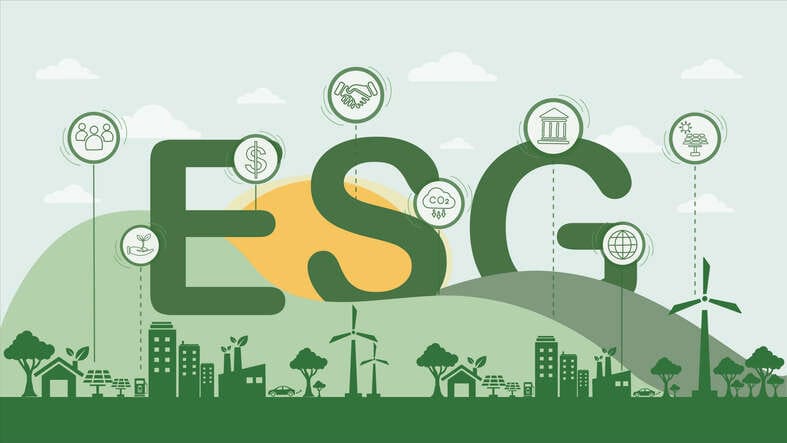
What is ESG investing
I. Introduction
A. Definition of ESG investing
ESG, which stands for environmental, social, and governance, represents a paradigm shift in the financial landscape. ESG investing involves evaluating companies not only based on traditional financial metrics but also on their environmental, social, and governance practices.
B. Significance in the financial landscape
ESG investing has gained substantial traction in recent years, reflecting a growing awareness of the interplay between corporate behavior and financial performance. Investors are increasingly recognizing the need to align their portfolios with values that go beyond profit margins.

II. Understanding ESG
A. Environmental factors
- Definition and examples: Environmental factors encompass a company’s impact on the planet. This includes its carbon footprint, energy efficiency, and commitment to sustainability. Examples range from renewable energy initiatives to waste management practices.
- Impact on investments: Investors are keenly assessing how environmental practices affect a company’s long-term viability. Those with robust environmental strategies are seen as better equipped to navigate regulatory changes and consumer preferences.
B. Social factors
- Definition and examples: Social considerations evaluate a company’s impact on society. This includes factors like labour practices, diversity and inclusion, and community engagement. Companies fostering positive social change are gaining favour among investors.
- Impact on investments: Investors recognize that companies with strong social responsibility are better positioned to attract and retain talent, build resilient supply chains, and foster positive relationships with customers and communities.
C. Governance factors
- Definition and examples: Governance refers to a company’s internal controls, ethical standards, and leadership structure. Key indicators include board composition, executive compensation, and transparency.
- Impact on investments: Companies with sound governance practices are viewed as less prone to scandals, fraud, and ethical lapses. Such entities are perceived as more stable and trustworthy investment options.

III. ESG investing principles
A. Integration of ESG factors
Integrating ESG factors involves considering them alongside traditional financial metrics in investment decision-making. This holistic approach aims to mitigate risks and identify sustainable investment opportunities.
B. Responsible investment strategies
- Positive screening: Positive screening involves actively seeking companies with strong ESG profiles. Investors prioritize entities contributing to positive social and environmental change.
- Negative screening: Negative screening excludes companies with poor ESG performance. Investors avoid businesses involved in controversial activities, such as those harming the environment or engaging in unethical practices.
- ESG integration: ESG integration involves systematically incorporating ESG factors into the investment analysis process. This helps investors identify risks and opportunities that may not be apparent through traditional financial analysis alone.

IV.. Performance and risks
A. ESG and financial performance
- Research findings: Numerous studies suggest a positive correlation between strong ESG practices and financial performance. Companies with high ESG scores tend to exhibit resilience and sustainable growth.
- Long-term vs. Short-term perspectives: While short-term financial gains may not always align with ESG priorities, the long-term benefits are increasingly recognized. ESG investing is a strategic approach that considers the lasting impact on both the planet and portfolios.
B. Risks associated with ESG investing
- Market risks: Market dynamics, including shifts in consumer preferences and regulatory changes, can impact the performance of ESG investments.
- Regulatory risks: Changing regulations, while promoting sustainability, may create uncertainties and challenges for businesses adapting to new compliance standards.
- Reputation risks: With poor ESG practices are vulnerable to reputational damage, potentially affecting their market standing and shareholder value.

V. Implementation of ESG investing
A. ESG metrics and ratings
Investors use various ESG metrics and ratings to evaluate companies. Third-party rating agencies assess and score companies based on their ESG performance, providing valuable insights for investors.
B. Role of institutional investors
Institutional investors play a crucial role in driving ESG adoption. Their significant influence on the market allows them to engage with companies, advocate for ESG improvements, and allocate capital strategically.
C. Individual investor participation
ESG investing is not exclusive to institutional players. Individual investors can now access ESG-focused funds and platforms, allowing them to align their personal values with their investment choices.

VI. Challenges and criticisms
A. Lack of standardization
The absence of standardized ESG metrics poses challenges in comparing and benchmarking companies. Efforts are underway to establish common reporting standards for greater transparency.
B. Greenwashing concerns
Greenwashing, or the misrepresentation of a company’s environmental practices, is a growing concern. Investors must critically assess the authenticity of ESG claims to avoid falling victim to misleading information.
C. Trade-offs and dilemmas
Investors may face trade-offs between financial returns and ESG considerations. Striking the right balance is essential, and the industry is actively addressing these dilemmas.

VII. Future trends in ESG investing
A. Evolution of ESG standards:
The future of ESG investing holds significant promise as the industry seeks to standardize metrics and reporting frameworks. Currently, there is a lack of consistency in how companies disclose their ESG practices, making it challenging for investors to compare and benchmark performance accurately. The push for global harmonization is gaining momentum, with organizations and regulators working towards establishing universal ESG reporting standards. This evolution will likely enhance transparency, facilitate better comparisons, and enable more informed investment decisions.
B. Technology and data in ESG analysis:
Technological advancements are set to revolutionize ESG analysis. Artificial intelligence (AI), machine learning, and big data analytics are increasingly being employed to gather, process, and analyze vast amounts of information related to ESG factors. These tools provide investors with deeper insights into a company’s ESG performance, allowing for more accurate risk assessments and uncovering investment opportunities aligned with sustainability goals. The integration of technology into ESG analysis is expected to streamline decision-making processes and enhance the effectiveness of responsible investment strategies.
C. Global regulatory developments:
Governments around the world are recognizing the urgency of addressing environmental and social challenges. As a result, we can expect more stringent ESG regulations to be implemented globally. These regulations may include mandatory ESG reporting requirements, disclosure standards, and incentives for companies to adopt sustainable practices. Investors need to stay abreast of these regulatory developments as they can significantly impact investment landscapes. The alignment of financial regulations with sustainable development goals is likely to encourage further integration of ESG considerations into mainstream investment practices.
D. Impact investing:
Beyond traditional ESG metrics, impact investing is gaining prominence. Impact investing focuses on generating positive, measurable social and environmental outcomes alongside financial returns. Investors are increasingly seeking opportunities to deploy capital in projects and companies that actively contribute to solving global challenges, such as climate change, poverty alleviation, and healthcare improvement. The future of ESG investing may see a shift towards more purpose-driven investments, where the measurable impact on society and the environment becomes a key criterion for investment decisions.
E. Green bonds and sustainable finance instruments:
The issuance of green bonds and other sustainable financial instruments is expected to surge in the coming years. Green bonds are debt securities where the proceeds are earmarked for environmentally friendly projects. The growth of sustainable finance instruments provides investors with more options to allocate capital towards projects that align with their ESG preferences. As financial markets continue to innovate, we can anticipate the development of new financial products that cater to the rising demand for sustainable and responsible investment opportunities.
F. ESG integration in fixed income markets:
While ESG integration has been more prevalent in equity markets, there is a growing trend toward incorporating ESG factors into fixed-income investment strategies. Investors are recognizing the materiality of ESG risks in fixed-income portfolios, particularly in the face of climate-related challenges and social considerations. This expansion of ESG integration into fixed-income markets reflects a broader recognition that sustainable investing is applicable across various asset classes.
G. Stakeholder engagement and activism:
Stakeholder engagement and shareholder activism are becoming powerful tools for investors seeking to influence corporate behaviour. Shareholders are increasingly using their voting power to advocate for ESG initiatives, pushing companies to enhance their sustainability practices. The future may witness a rise in collaborative efforts between investors, companies, and regulators to address ESG challenges collectively. This trend underscores the growing influence of responsible investors in shaping corporate policies and promoting sustainable business practices.
In conclusion, ESG investing is a critical and evolving component of sustainable finance. As we navigate this landscape, it’s clear that environmental, social, and governance considerations are increasingly vital in investment decisions. By integrating these factors into our investment strategies, we not only contribute to a more sustainable future but also have the potential to achieve positive financial outcomes. However, staying informed and discerning in our approach remains essential in this dynamic field. ESG investing offers a pathway to align financial goals with broader societal and environmental values, creating a win-win scenario for both investors and the planet.


